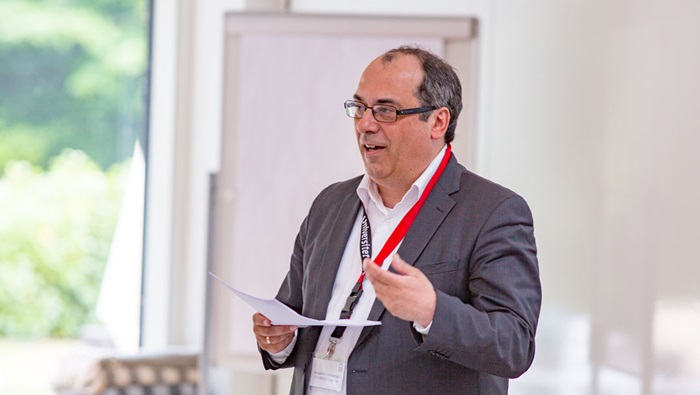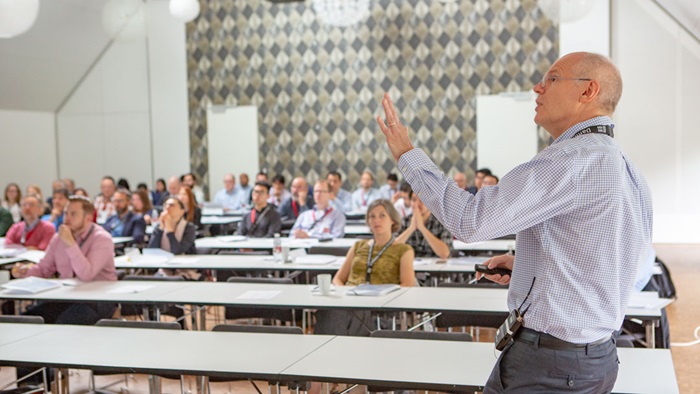Synergy with process simulation and other cross-sectorial collaborations were in focus at the CERE Discussion Meeting 2018.
By applying current to two open water containers, Senior Researcher Nikolaj Blom of CERE is able to create a water bridge of a few centimeters between them. The experiment, shown in a video during Nikolaj Bloms’ presentation, became symbolic for the CERE Discussion meeting 2018.
The annual event is where members of the CERE industry Consortium engage in discussions with the staff of the center. A large part of the content of this years’ version was devoted to bridging across disciplines.
Most visible was collaboration with the KT-Consortium at DTU Chemical Engineering. Since its founding in 1997, this industry Consortium has changed its name a few times, but always remained committed to process simulation. Last year CERE chairman, Professor Georgios Kontogeorgis agreed to lead both consortia, resulting in a co-organized event this year with several sessions involving both CERE and KT-Consortium content.

“The CERE consortium has more participating companies from the energy sector, while the KT-Consortium has more pharmaceutical and biotech participants. Still, many projects have related challenges and approaches,” says Georgios Kontogeorgis, revealing this had been a topic during the traditional, closed round table discussion with the CERE industry Consortium participants and the faculty of CERE. “The industry participants see partly synergy with the KT-Consortium. So, maybe we will repeat the joint format next, but we will see.”
Three highly interdisciplinary programs
As always, the CERE Discussion meeting was well attended by industry – no less than 23 participants from the Consortium came. Further, 28 participants from various international and some Danish research institutions were present. This was an unusually high number, contributing to the record overall participation of 117.
The meeting marked the termination or upcoming termination of three large programs in CERE. The OPTION project on optimization of production across entire oil fields is to be completed by the end of this year. The SmartWater project on adjustment of the chemical composition of water for water flooding to increase yields and the BioRec project on use of enzymes and bacteria in Enhanced Oil Recovery have both been completed recently.

All three programs have been highly interdisciplinary – so once more touching upon the theme of bridging – and have brought significant results.
While the three programs have been or will soon be terminated, the activity continues in a range of spin-off projects. Many of these are carried out in collaboration with the Danish Hydrocarbon Research and Technology Center (DHRTC). More than 50 % of the oil and gas related research at CERE are in cooperation with this center, which was inaugurated three years ago and is situated at DTU.
Alumnae come back in new roles
During his closing remarks at the Discussion meeting, Georgios Kontogeorgis noted that the building of bridges in not just between disciplines:
“It is a great pleasure to see that no less than 25 % of the industry participants here are former master students, PhD students or postdocs of CERE. We are always happy to see our alumnae again. Having them here as representing industry shows the vitality of CERE and the industry Consortium.”
The CERE Discussion meeting 2018 was held June 18-20 at the Rungstedgaard Conference Center.